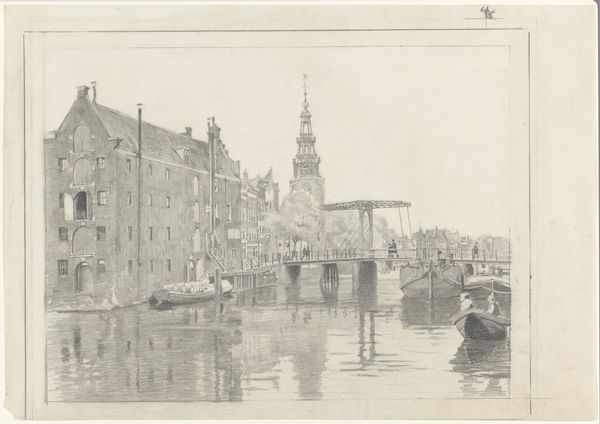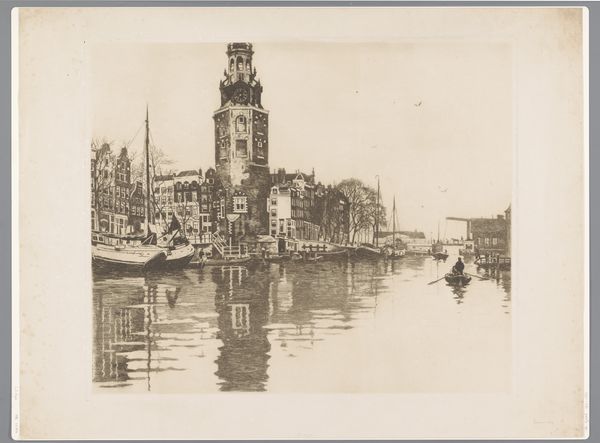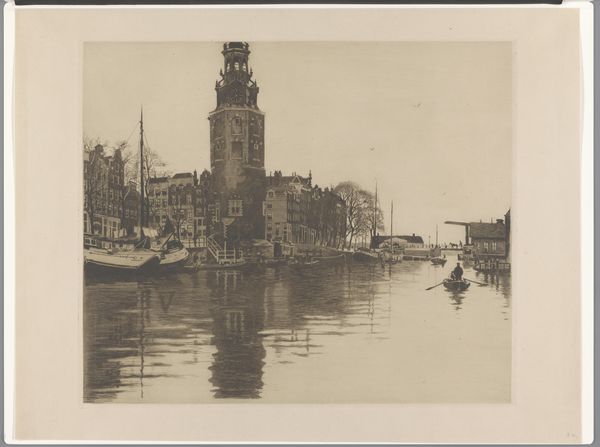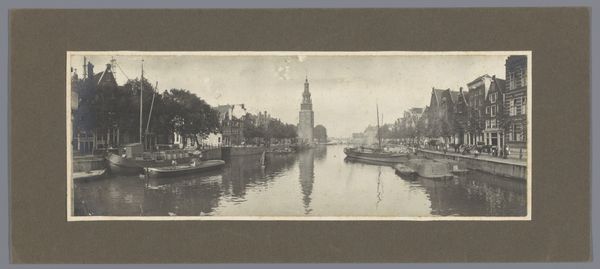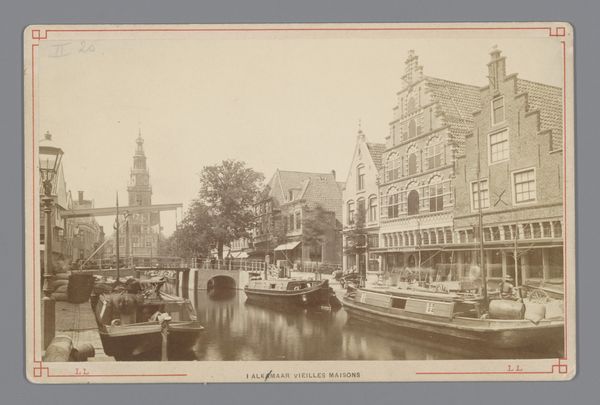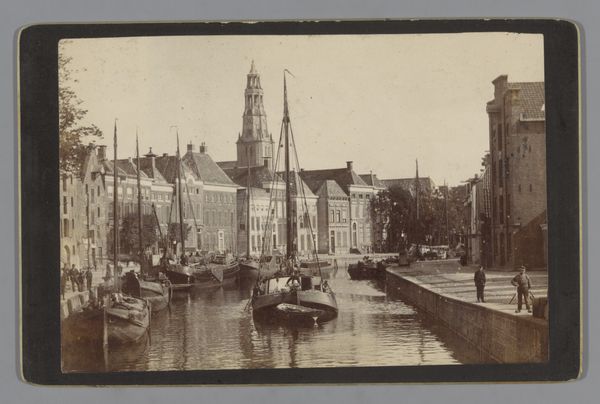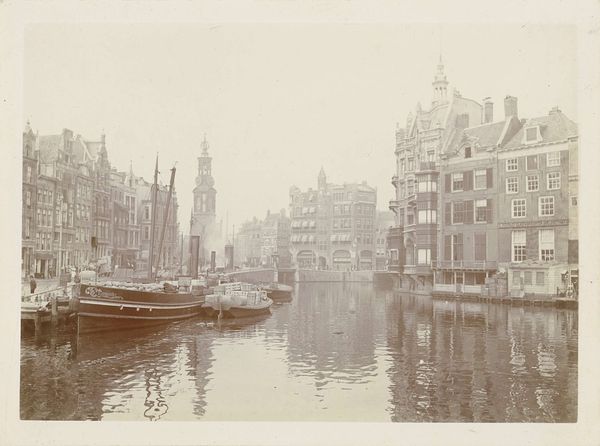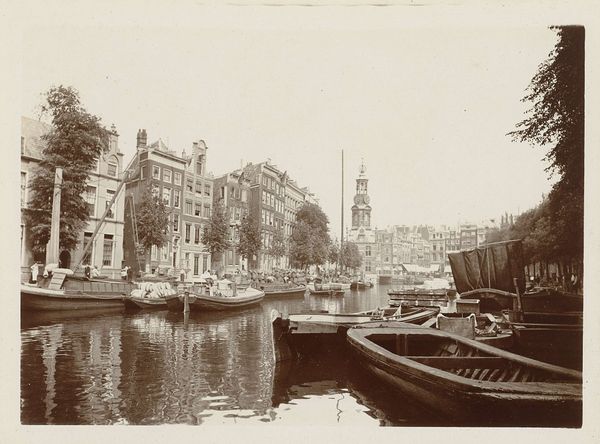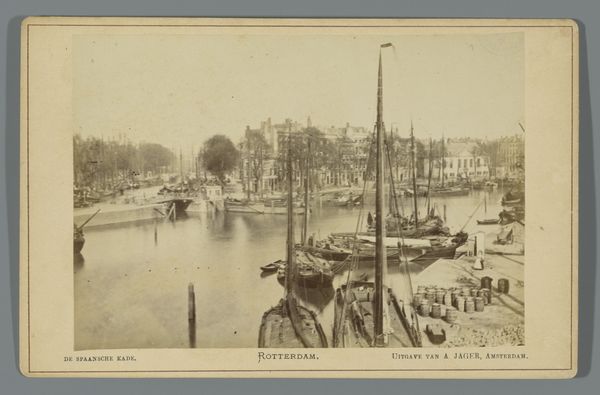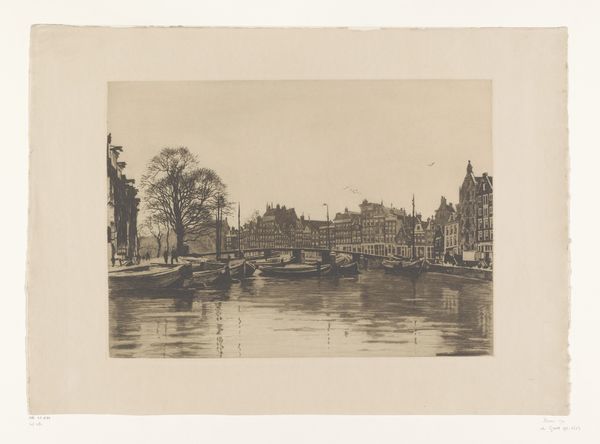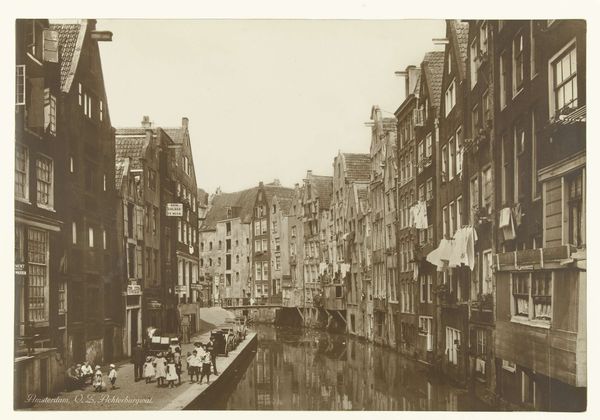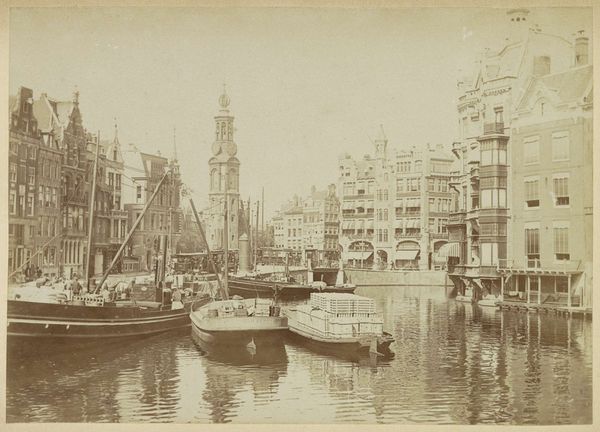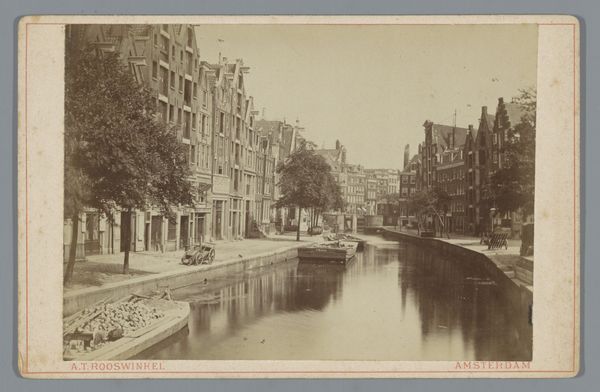
Dimensions: height 360 mm, width 465 mm
Copyright: Rijks Museum: Open Domain
Editor: So, here we have Willem Witsen’s "View of a Bridge near Warehouse Sweden in Amsterdam," an etching from 1912. I’m immediately drawn to the intricate linework and how it captures the stillness of the water. What elements stand out to you in this piece? Curator: The success of the work rests on Witsen’s manipulation of the etching technique to generate pictorial depth. Note how the density of line increases as one moves vertically. The building to the right is firmly grounded because it appears tonally darker than the receding cityscape, achieved through cross-hatching. Editor: I see what you mean about the cross-hatching adding depth. So, it's all about how the artist uses line and tone to create space on a flat surface? Curator: Precisely. The reflections in the water mimic and distort the architectural forms, creating a fascinating interplay between reality and its representation. Are those reflections simply representational? No. Instead, they further contribute to the spatial ambiguity and overall complexity. Editor: That's interesting; it's not just a mirror image. It seems like he's using the water to almost abstract the scene. Curator: Yes, and consider the strategic placement of the bridge, dividing the composition and leading the eye toward the distant tower. The bridge's rigid geometry provides a counterpoint to the fluid reflections. It underscores the artist's awareness of formal balance. What might seem incidental to other viewers is not so to someone focused on pictorial architecture. Editor: I never thought about it that way, focusing on composition rather than the scene itself. Thanks for pointing out the subtleties! Curator: Indeed! Paying close attention to the formal elements can greatly enrich our appreciation of any work.
Comments
No comments
Be the first to comment and join the conversation on the ultimate creative platform.
